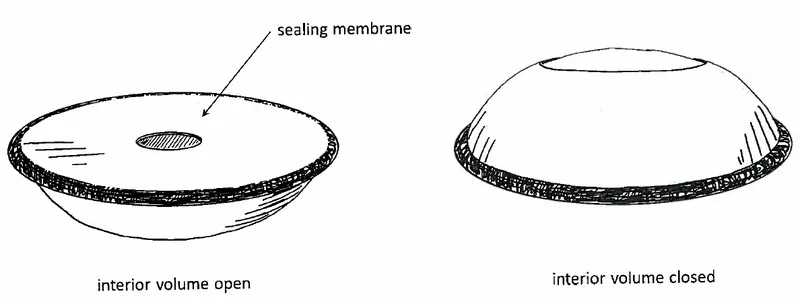Drug Delivery Based on Bistable Membrane
This technology is a long-term, reversibly controllable drug delivery device with therapeutic, diagnostic, or prophylactic applications.
Researchers
-
subcutaneous drug delivery device with manual activation and deactivation of drug release
United States of America | Granted | 10,967,122
Figures
Technology
This invention employs a bistable member that allows for a non-electronic drug delivery device to permit passive diffusion in one state while stopping drug release in a second state. A number of device designs are envisioned but generally consist of a housed drug reservoir and a bistable member, such as a membrane or ribbon. Changes in device state not only adjust drug release rates, but also allows this device to be applied to a diverse set of medical applications. The simple device is constructed with biocompatible, polymeric materials. Once placed subcutaneously, a patient can feel its configuration with the help of fiducial features such as surface patterning. The patient can reversibly and mechanically change the device between the two states without special tools or medical training. This technology creates long-term drug delivery devices that give patients reversible control of drug release.
Problem Addressed
Long-term, implantable drug delivery devices are used for a variety of medical purposes. There are currently two main device designs which suffer from major flaws. The first more traditional design includes a polymeric matrix material that maintains a passive and continuous release of drugs. However, the device cannot be turned off or regulated and must be surgically removed by a medical professional to cease drug release. Recently, a second device design that can deliver an actively controlled release utilizing electronics has been developed. However, this device design is relatively complex and expensive. This invention introduces a new, inexpensive device design that allows a patient to reversibly control drug release over extended periods of time. This device is especially applicable in developing countries where it will allow patients without ready access to a physician control over their own dosing.
Advantages
- Superior to current passive devices since release can be reversibly controlled by patients without the use of tools or medical expertise
- Improvement on existing devices since there is no need for electronics or power, simplifying manufacturing and reducing cost
- Reservoir reduces sensitivity to drug formulation
- High packing ratio compared to current devices allows for a smaller device
- Rate of drug release may be controlled solely by the device structure and is independent of drug amount or loading method
License this technology
Interested in this technology? Connect with our experienced licensing team to initiate the process.
Sign up for technology updates
Sign up now to receive the latest updates on cutting-edge technologies and innovations.

